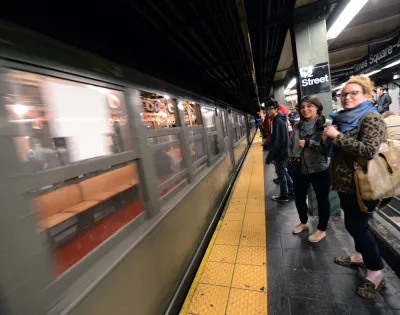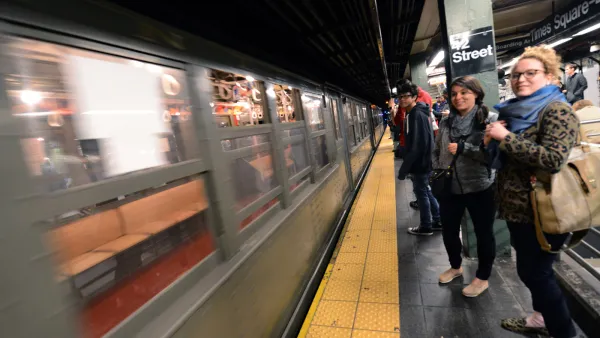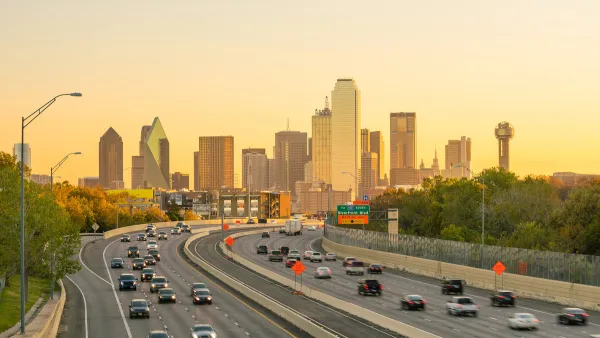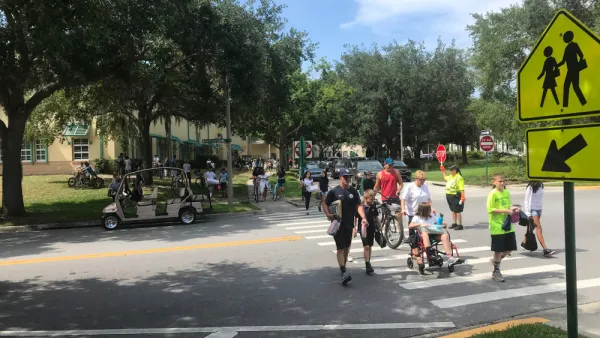Transit in general, and buses in particular, are losing riders, especially during off peak hours. Car pooling is down sharply as well.

From 1996 to 2014 public transit ridership in the United States increased more or less steadily, with much of that growth coming from gains in New York subway ridership. Now that trend is over, and transit ridership is on the decline. This decline has taken place even as the country's population has increased, meaning that the per capita declines are even more pronounced.
"What I argue here is that what we’re seeing now is unquestionably a decline in transit ridership—almost universal among large cities. Yet there are reasons to believe it isn’t a permanent shift, given that its causes don’t appear to be primarily related to technological change," Yonah Freemark writes.
Looking at commuting, Freemark finds the dominance of driving alone isn't new but a trend that can be tracked back to at least the seventies. In past decades, carpooling accounted for more than 20 percent of all trips to and from work, now carpooling, transit, walking, and biking put together don't add up to even 25 percent of trips. "The significant decline over the past few years is reinforcing what has been happening for ages, probably not reflecting the availability of new transportation modes likes ride-hailing or a sudden change of interest of the public away from transit," Freemark argues.
But talk of a transit collapse may end up a self-fulfilling prophecy. If officials, convinced by grim arguments about transit, decide to forgo investment in favor of more car-focused infrastructure and to let private services like Uber handle mobility, then a few years of falling ridership could turn into a death spiral.
FULL STORY: U.S. transit systems are shedding riders. Are they under threat?

National Parks Layoffs Will Cause Communities to Lose Billions
Thousands of essential park workers were laid off this week, just before the busy spring break season.

Retro-silient?: America’s First “Eco-burb,” The Woodlands Turns 50
A master-planned community north of Houston offers lessons on green infrastructure and resilient design, but falls short of its founder’s lofty affordability and walkability goals.

Delivering for America Plan Will Downgrade Mail Service in at Least 49.5 Percent of Zip Codes
Republican and Democrat lawmakers criticize the plan for its disproportionate negative impact on rural communities.

Test News Post 1
This is a summary

Test News Headline 46
Test for the image on the front page.

Balancing Bombs and Butterflies: How the National Guard Protects a Rare Species
The National Guard at Fort Indiantown Gap uses GIS technology and land management strategies to balance military training with conservation efforts, ensuring the survival of the rare eastern regal fritillary butterfly.
Urban Design for Planners 1: Software Tools
This six-course series explores essential urban design concepts using open source software and equips planners with the tools they need to participate fully in the urban design process.
Planning for Universal Design
Learn the tools for implementing Universal Design in planning regulations.
EMC Planning Group, Inc.
Planetizen
Planetizen
Mpact (formerly Rail~Volution)
Great Falls Development Authority, Inc.
HUDs Office of Policy Development and Research
NYU Wagner Graduate School of Public Service





























